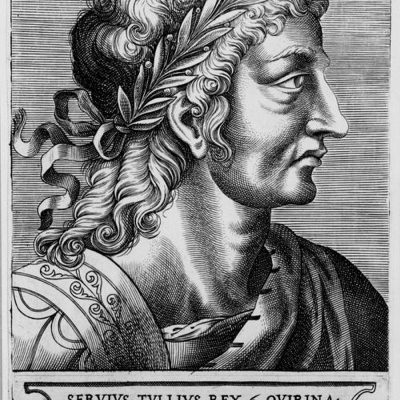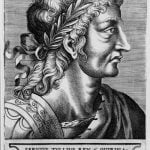We know very little about the Roman army in the early monarchy. The problem is mainly due to the lack of adequate pre-republic sources dealing with the Roman army of that period.
The Roman army probably existed from the beginning of the village on the Tiber. It began its evolution with the formation typical of all state organisms at the beginning of the first millennium BCE, namely heavy, aristocratic cavalry. The earliest army consisted of the king and his team, and men from three “tribes” (tribus) inhabiting the area, each consisting of 10 curiae. Each of the curia was obliged to display 100 pedestrians; thus one tribus fielded a thousand footmen under the leadership of a tribune (tribunus – literally “tribal chief”). Such a force of 3,000 was called a legion (legio, meaning “enlistment/army”) and was divided into 100 centuriae. In addition, each of the tribus was obliged to put up a unit of 100 horsemen, which in total gave 300 horsemen of all tribus; nobiles and their sons made up this unit. It was called ordo equester, that is, a horse unit.
The Roman army was thus 3,300 at the beginning of the monarchy.
Only a citizen with an appropriate financial status that would allow him to buy equipment could become a soldier. Moreover, what is interesting, he did not receive any pay or rations. The soldier of the beginning of the monarchy had to be fully independent financially. One could say that it was a kind of duty towards the motherland.
Contacts with Etruscan neighbors, and through them with the Hellenes, led to the adaptation of heavy infantry – phalanxes, which they accepted in the middle of the 6th century BCE; so-called “Servian reforms”. These reforms resulted from the need to increase the size of the army and we know its shape thanks to Titus Livius. The military reform had to be closely related to the social reform, which, according to reports, was undertaken by King Servius Tullius. He divided Roman society into 5 classes according to the property certificate:
Class | Description |
1st class | Citizens with wealth over 100,000 aces. Their weapons were: helmet, round shield (clipeus), greaves, armor, spear (hasta) and sword. The strength was 80 centuriae. |
2nd class | Citizens with wealth between 75,000 and 100,000 aces. Their weapons were: a helmet, a longitudinal shield, greaves, a spear (hasta) and a sword. The strength was 20 centuriae. |
3rd class | Citizens with a wealth of 50,000 aces or more. Their weapons were: a helmet, longitudinal shield, greaves, |
4th class | Citizens with assets up to 25,000 aces. They were armed with a spear (hasta) and a javelin. |
5th class | Citizens with assets up to 11,000 aces. Their weapons were: slingshots and throwing stones. |
Each unit (centuria) had 100 soldiers. Citizens armed themselves. Property class I exhibited 80 centuries of heavy-armed soldiers and 18 centuries of equestrian cavalry. In II-IV, they displayed light infantry, the 5th class was exempt from military service but had to serve as an aid (cooks, trumpeters)
Citizens below the 11,000 aces threshold constituted one centuria and were free from military service. In turn, the citizens with the best financial resources constituted the 12th driving centuries. Centuries are divided by age:
- for younger (from 17 to 46 years)
- for older (from 46 to 60)
After the reform, the total strength of the Roman army was 19,300 soldiers.
The Roman army of the kingdom period was therefore very similar to the Greek army in terms of both strength and armed forces. The fighting style was also similar, as the phalanx was often used.







